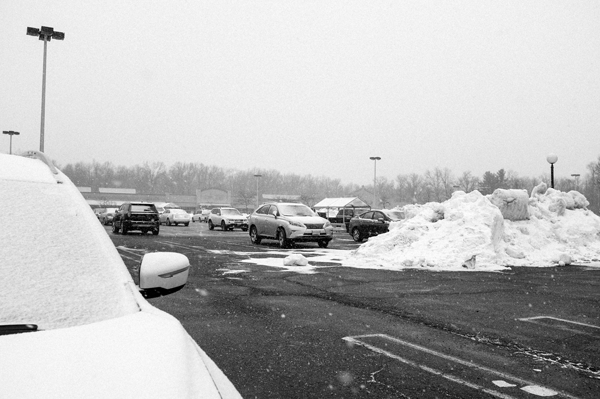
The colder temperatures are here and some parts of North America are already seeing the first snow. Snow, sludge, mud and ice-preventing chemicals may be tracked into your facility with pedestrian and equipment traffic. Your parking lots and sidewalks may start deteriorating due to excessive precipitation and the freeze-thaw cycles. Both indoor and outdoor surfaces may become slippery and limit accessibility for your visitors or associates. Let's look into these winter-specific challenges further and what you can do about them.
1) Sodium Chloride (NaCl) tracked inside:
Known as table salt, this chemical is widely used to de-ice roads and highways. It is also used on parking lots and sidewalks, making its way into your building. Larger salt rocks mixed with dirt tracked on shoes may cause scratches and abrasions on commercial floors. Even mildly acidic salts may chemically etch the surface of polished concrete floors, diminishing the shine. WHAT TO DO: Regular cleaning with professional-grade cleaners designed for your specific floors. Visit QuestMark DIY shop to order online.
2) Snow and mud tracked inside:
When melting in your building, snow and ice can create a slip hazard. WHAT TO DO: Clean up any snow, mud or standing water immediately. Establish a cleaning schedule for your floors.
3) Shorter life for scrubber pads and bristles:
You may notice your scrubber pads get dirty from sand and salt rocks that are constantly dragged inside. Using these may result in scratches and abrasions. WHAT TO DO:Always inspect your cleaning machinery and tools for any lodged rocks and debris. Replace the pads regularly. You can easily order them online here.
4) Freeze-thaw cycles and your pavement:
The nature of asphalt-based pavements allows them to be flexible and expand in high temperatures, preventing cracking. However, the colder it gets outside, the more rigid and brittle your pavement is. While freezing temperatures may cause asphalt to crack, things get even more complex when the temperature shifts from above freezing to below freezing and back. These fluctuations are called freeze-thaw cycles. When snow and ice melt, the water gets into small cracks in your pavement. During the freezing stage, that water expands and makes the cracks larger. Over time, these cracks will grow, creating potentially unsafe or inaccessible surfaces for foot traffic, wheelchairs and even vehicles. WHAT TO DO: Consider waterproof asphalt coatings for your outdoor traffic areas and parking lots. Repair any visible cracks and damage immediately, as they will only get more significant due to the impact of winter weather. Check out these video series to learn more about repairing sidewalks, curbs and parking lots.
In addition to season-specific challenges, you always want to ensure your floors are clean and safe for all associates and visitors. Check out this article for tips on everyday cleaning and maintenance of your facility's floors. Noticed damage? QuestMark Online Shop offers a variety of DIY commercial-grade flooring products. The support team is just a call away if you have questions or would like an onsite product demonstration. Check out QuestMark's flooring and traffic solutions to help you keep your floors and grounds safe, clean and ADA-compliant.